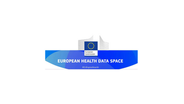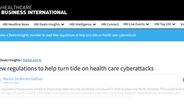- Heather Thompson
"The Home is the Future of Healthcare" - decentralization is inevitable and the transition

Patient care is moving closer to primarily being administered in the home. Kaiser Permanente’s CEO, in fact, recently said that the home is the future of healthcare. Along with this trend comes an increasing number of transactions being conducted online, enabled by remote patient monitoring (RPM). In fact, 52% of last year’s patient transactions at Kaiser Permanente were conducted online.
Decentralization is inevitable, and the transition is already happening. As a result, the growth rate of hospital devices and equipment will likely pale in comparison to the investment and innovation in RPM and devices that can be used in the home for health monitoring. It’s a market opportunity that device manufacturers, particularly those focused on non-invasive vital signs monitoring, don’t want to get behind on.
The historically distinct markets of regulated medical devices and consumer health wearables are blending, driven by the advance of wearable technologies and the progress of telehealth. Traditional consumer technology companies are moving deeper into the device space – such as Apple with its latest upgrade to the Apple Watch, allowing for medical-grade quality monitoring available directly to consumers yet viable for a doctor to use in treatment and diagnosis.
The result is an exciting new category of connected healthcare devices that have three key attributes that allow them to gain more traction in the market: The data is of medical-grade quality, the device is user-friendly, and it is more affordable than traditional medical devices. The last is an important point considering the growing portion of healthcare expenses that patients are now responsible for in a volatile pricing market.
Form factor is an important driver in order for a device to achieve user-friendliness, meaning it is designed with user wearability in mind. In fact, it may be the most important factor and one key for medical device companies to understand, as designing for ease of use has not been the device engineer’s primary concern historically. An exciting frontier for form factor is electronic skin (eSkin) technology. The growing popularity of the eSkin market is delivering more slender, flexible, sleek and barely-there devices packed with advanced sensors and wireless transmitters.
Electronic skin technology is making headway in monitoring health and vital signs such as heart rhythm, respiratory rates, heart rate variability, ECG, temperature and more. These wireless devices resemble Band-Aids in that they conform to the natural shape of the human body. They can be snugly placed at the most ideal location on the body based on the type of data to be monitored, which contributes to accuracy. Prior to eSkin technologies, wearables had hard surfaces and were either loosely attached, thereby sacrificing data consistency and quality, or were uncomfortable to wear.
Medical device company officials around the world like how simple and comfortable the monitoring device can become with the use of eSkin technology. It’s a rapidly growing space enabling multi-vital sign monitoring capabilities and, ultimately, a competitive edge as healthcare moves out of the hospital and into people’s homes. Electronic skin technologies and medical wearables will not only make healthcare more efficient and cost-effective, but also deliver care to a larger population around the world.
Jiang Li is founder and CEO of VivaLNK. Li’s nearly 15-year career in high technology took a new direction when a routine health check landed him at the ER under examination out of fear he was in the middle of a heart attack. Noticing the outdated monitoring technologies in the hospital, he knew emerging technologies could be properly implemented and sought to apply his background in flexible electronics to healthcare. VivaLNK is a provider of connected healthcare devices for wellness, patient care and telemedicine. The company’s portfolio includes wearable clinical-grade devices that continuously monitor the health and well-being of individuals.






